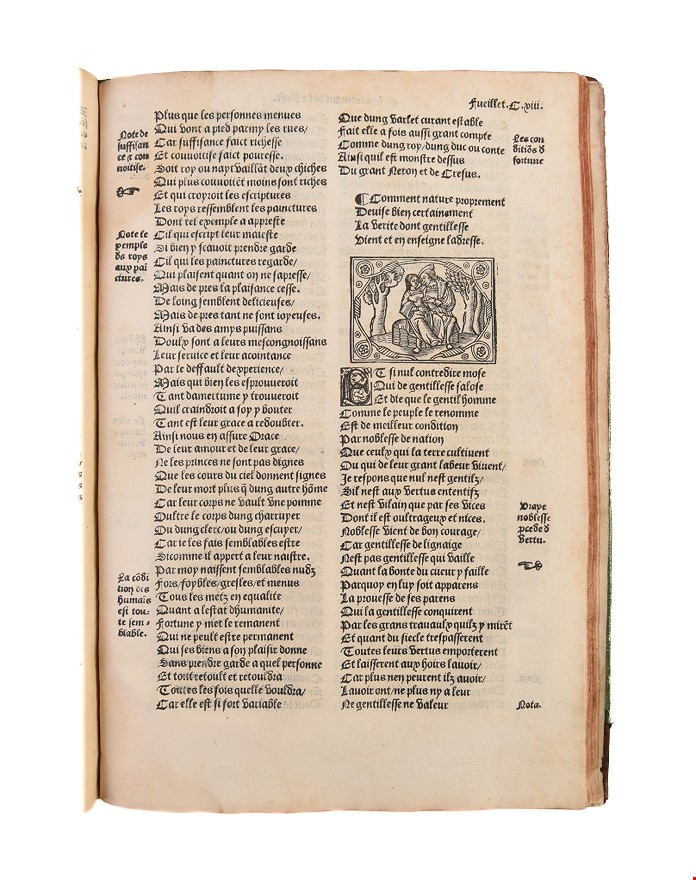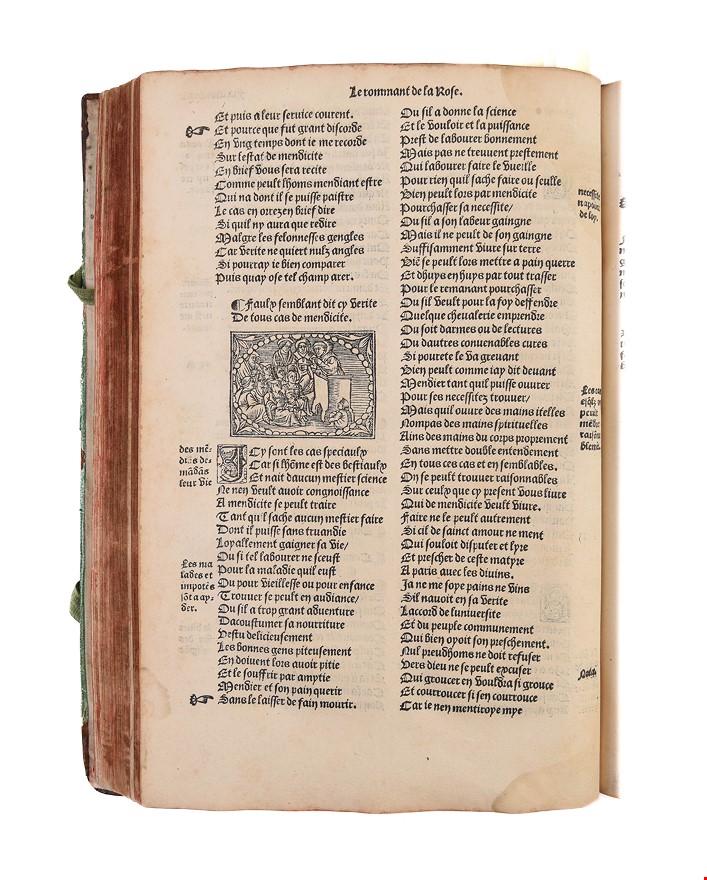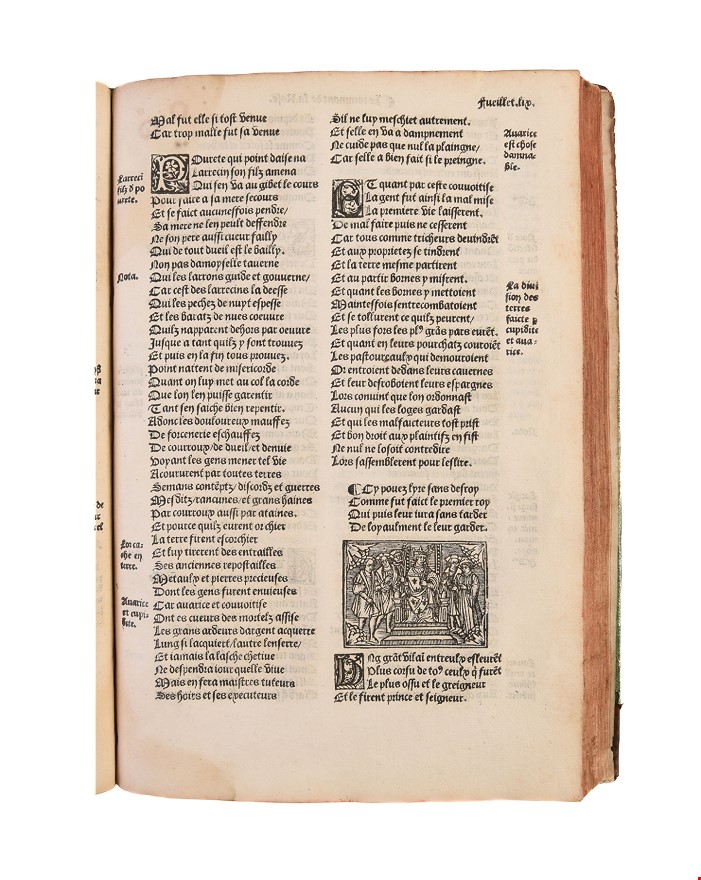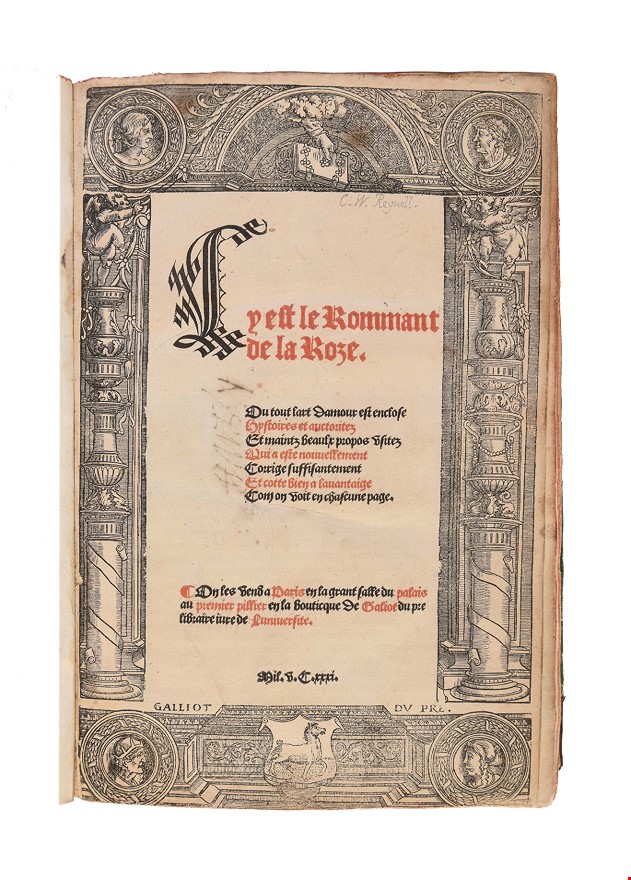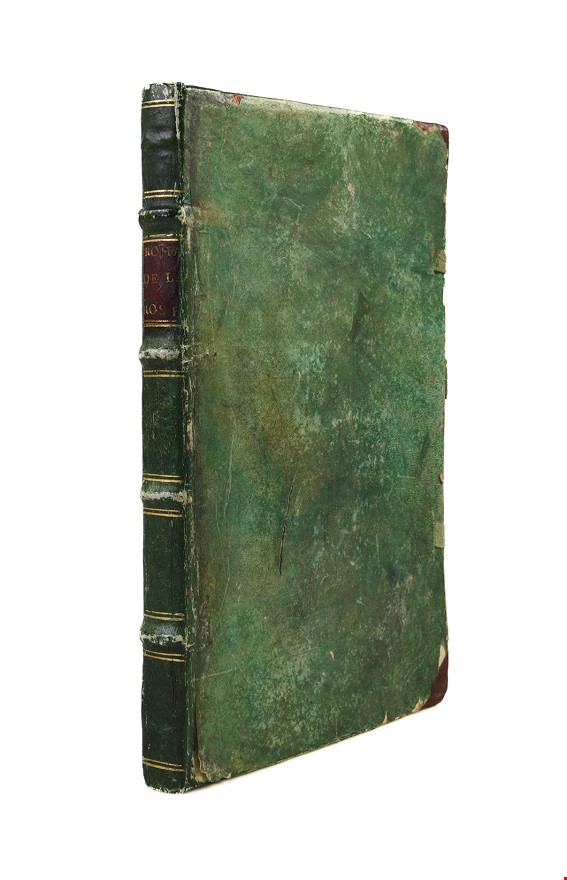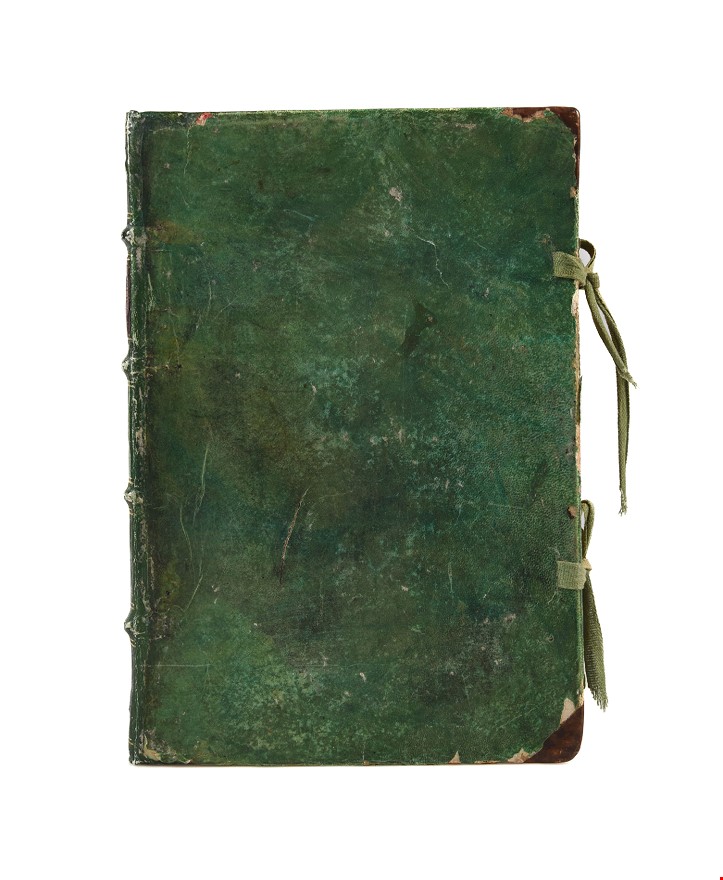Cy est le Rommant de la Roze
DE LORRIS Guillaume (1531)
£7500.00
"THE MOST IMPORTANT WORK OF FRENCH LITERATURE IN THE MIDDLE AGES"
Four-part woodcut architectural border with putti, classical roundels in corners and Du Pré's name and horse device in shield at foot, large woodcut at head of first page, multiple small woodcuts in text (several repeated), large opening woodcut initial, smaller woodcut initials throughout, Du Pré's woodcut ship device on recto of final leaf. Printed in lettres batardes.
Folio. cxxi, [1]ff. 17th-century(?) green vellum over pasteboards, corners repaired with leather, spine with four raised bands, double gilt fillets, label of red morocco in second compartment, lettered in gilt, red edges, ribbon ties (vellum scuffed and chipped, slightly lifting on upper board, colour rubbed, wear to spine).
Paris: Galliot du Pré,
A handsome copy of 'the most important work of French literature in the Middle Ages', Guillaume De Lorris and Jean de Meung's allegorical poem on chivalric love. The present work is the third edition of poet and translator Clement Marot's (1496-1544) 'modernized' version of the text (after those in 1526 and 1529) though the attribution to Marot as editor of this work has been challenged (see Rigolot, p.36).
Circulating in more than 300 manuscript copies and printed for the first time in 1481, the Roman de la Rose was extremely popular, running to multiple printed editions and exerting a great influence on French poets and poetry thereafter. Composed over the course of the thirteenth century, the first portion is the work of Guillaume de Lorris and 'is an 'Art of Love', after the model of Ovid, but in which love is the courtly gallantry of the day and the form is an elaborate allegory'. It was continued in the second half of the century by Jean de Meung 'in a very different strain...an encyclopaedic discourse, addressed to a more general public, written from a bourgeois standpoint and in many passages with a coarse realistic vigour and vividness' (Harvey & Heseltine, p.630). It was adapted and translated by Chaucer into Middle English in his Romaunt of the Rose.
Provenance: 1. 'C. W. Reynell' neatly pencilled on title page, namely Charles Weatherby Reynell (1798-1892), printer; his sale, Selection from the Library of C. W. Reynell (London: Sotheby, Wilkinson & Hodge, 15 May 1895). 2. From the Ken Rapoport Collection.
Ref: Harvey & Heseltine, p. 630. Brunet III 1175 & Supplement I 892; Fairfax Murray, French 330; Adams, L1519..
Stock Code: 246883
